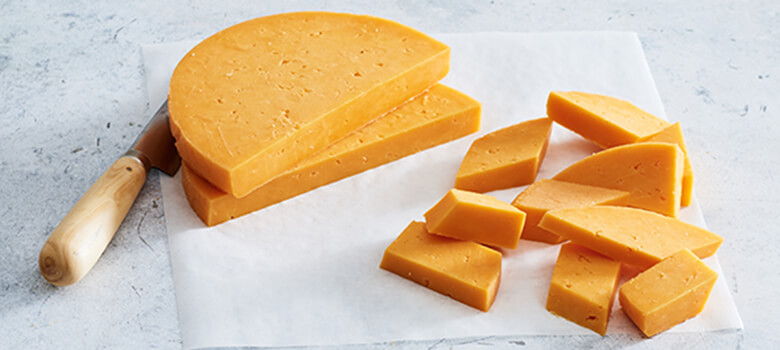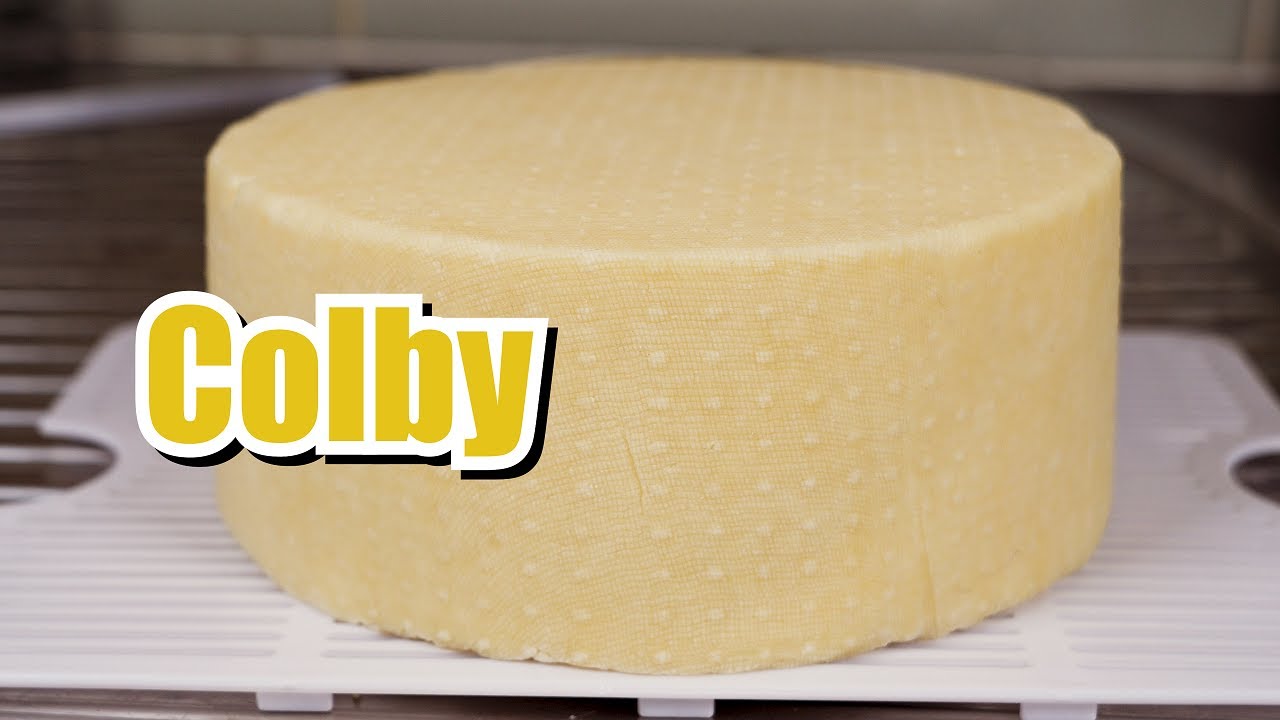Cheese lovers, prepare your taste buds for a flavorful exploration as we delve into the world of Cheddar vs Colby. While both cheeses may seem similar at first glance, there are some key differences that set them apart in terms of taste, texture, and aging process. From the lactic and mild notes of Colby to the sharp and aged complexities of cheddar, understanding these distinctions can elevate your culinary experiences. Let’s embark on a cheesy journey to discover the nuances between these beloved cheeses.
Cheddar vs. Colby Cheese: A Guide for Cheese Lovers

Cheddar and Colby are cheese superstars, but they have distinct personalities. Let’s explore what makes them different!
Flavor and Texture:
- Cheddar: Bold and sharp with a firm, crumbly bite. The flavor intensifies with age.
- Colby: Milder and sweeter than Cheddar. It boasts a softer, creamier texture with a hint of nuttiness.
Production Secrets:
These taste and texture differences stem from the cheesemaking process:
- Cheddar: The curds are not washed, allowing them to develop a stronger flavor during the longer aging period (months to years!).
- Colby: The curds get a cold water rinse, stopping some of the flavor development. Colby is also aged for a shorter time (typically weeks or months).
History and Origins:
- Cheddar: A true cheese veteran, Cheddar hails from the English village of Cheddar. Its production dates back as early as the 12th century!
- Colby: This American cheese is a relative newcomer. Invented in the late 19th century by Joseph Steinwand in Colby, Wisconsin, it was designed to be a milder alternative to Cheddar.
Choosing Your Cheese:
Understanding these characteristics can help you pick the perfect cheese for your dish.
- Cheddar: Ideal for grating over pasta, adding a sharp bite to sandwiches, or enjoying on its own as part of a cheese board.
- Colby: Great for melting on burgers and nachos, adding creaminess to salads, or enjoying as a snack with fruit.
With their unique qualities, both Cheddar and Colby offer delicious options to elevate your culinary creations!
Cheddar Cheese: A Delicious and Versatile Treat

Cheddar cheese is a classic for a reason! It has a unique combination of features that make it a favorite among cheese lovers. Here’s a closer look at what makes cheddar so special:
Distinctive Flavor and Texture: Cheddar boasts a firm, sometimes crumbly texture. Its flavor ranges from rich and mild to sharp and tangy. The longer a cheddar is aged, the sharper and more intense its taste becomes.
Color Variations: Cheddar’s color can vary from a pale yellow to a deep orange. This difference depends on whether natural or artificial coloring is added. Traditionally, annatto, a natural dye derived from a plant, is used to achieve a vibrant orange hue.
A Culinary Workhorse: Cheddar’s versatility is unmatched. Enjoy it on its own, or incorporate it into a variety of dishes. It enhances everything from sandwiches and cheeseburgers to macaroni and cheese.
Unveiling the Secrets of Cheddar Production
The process of creating cheddar cheese is fascinating. Here’s a breakdown of the key steps:
- Curd Separation: The journey begins with separating the curds (solid milk proteins) from the whey (liquid portion) using rennet, an enzyme.
- Developing Texture: The curds are then cut and heated while being stirred. This process helps expel more whey and creates cheddar’s characteristic texture.
- Shaping and Salting: The curds are pressed into molds to remove the remaining whey and form the cheese. Salt is then added for flavor and preservation.
- The Art of Aging: Finally, the cheese is aged for a specific period, ranging from a few months to several years. This aging process is what truly defines the final flavor and texture.
A World of Cheddar Varieties
Cheddar cheese isn’t just one type – it offers a variety of options to suit different palates. Here are some popular varieties:
- Mild Cheddar: This crowd-pleaser has a smooth texture and a subtle buttery taste.
- Medium Cheddar: As the name suggests, it offers a balance between mild and sharp flavors.
- Sharp Cheddar: This variety boasts a more pronounced tangy flavor and a slightly crumbly texture.
- Extra Sharp Cheddar: For those who love a bold taste, extra sharp cheddar delivers a strong, sharp flavor and a crumbly texture.
The aging process plays a critical role in these variations. Longer aging produces a more intense flavor and a crumblier texture. This range of options ensures there’s a perfect cheddar cheese for everyone!
Colby Cheese: A Mild and Delightful Option
What is Colby Cheese?
Colby cheese is a semi-hard cheese known for its pleasant and easy-going flavor. It boasts a lactic and mild taste with a delightful buttery finish. Compared to cheddar, Colby offers a more open texture and a touch of sweetness.
The Making of Colby
The unique production process sets Colby apart from other cheeses. Similar to cheddar, the process starts with warming and acidifying milk using starter cultures. However, Colby takes a different turn. The curds are rinsed with cold water, resulting in a distinct texture with irregular holes. This rinsing also removes lactose, leading to the cheese’s milder and sweeter character compared to cheddar. Finally, the curds are drained, pressed, and aged for a shorter time.
A Delightful Texture and Flavor
Colby cheese’s charm lies in its unique texture and taste profile. It’s firm yet has an open texture that melts beautifully in your mouth. The flavor is lactic and mild, with a subtle hint of butteriness. Compared to cheddar, Colby boasts a sweeter taste and a more delicate texture.
Culinary Versatility
These distinct characteristics make Colby cheese a popular choice for various dishes. It shines in sandwiches, burgers, and cheese platters. Its mild flavor pairs well with a variety of ingredients, adding a creamy and slightly sweet note to your recipes.
Cheddar vs. Colby Cheese: Nutrition Breakdown
Branding in the Cheese World?
This section might be interesting for businesses, but let’s focus on cheese!
Calories and Fat: Cheddar Takes the Lead (For Weight Watchers)
Cheddar cheese comes out slightly ahead when it comes to calorie and fat content. A 1-ounce serving of Cheddar has about 113 calories and 9.5 grams of fat, while Colby packs 172 calories with the same amount of fat (9.5 grams). So, if you’re watching your weight, Cheddar might be a better choice.
Protein and Calcium Powerhouse: Both Cheeses Deliver
Both Cheddar and Colby are good sources of protein and calcium, essential for healthy bones, muscles, and tissues. Cheddar generally has slightly more of both nutrients, but the exact amount can vary depending on the brand and cheese variety. Regardless, including cheese in your diet can help you meet your daily needs for these important nutrients.
Culinary Uses of Cheddar and Colby Cheese

Cheddar Cheese: A Versatile Superstar
Cheddar cheese is a champion in the kitchen, offering a variety of uses. It melts beautifully, making it the go-to cheese for melty goodness in grilled cheese sandwiches, creamy macaroni and cheese, and juicy cheeseburgers. But cheddar isn’t just about melty bliss. Its sharp flavor adds a delicious kick to salads, soups, and omelets for a delightful taste bud surprise.
Colby Cheese: Milder and Creamier Options
Colby cheese takes a gentler approach with its mild taste and creamy texture. It’s perfect for snacking on its own with fruits, crackers, or bread. But Colby shines in cooked dishes, too. Sliced Colby elevates sandwiches, quesadillas, and casseroles with its subtle and smooth taste.
Grated Goodness: Topping Perfection
Both cheddar and Colby can be grated or shredded for a versatile cheese topping. Sprinkle them over pizzas, nachos, or baked dishes for a cheesy explosion. They can also be incorporated into dips, sauces, and spreads, adding a rich and creamy element to elevate any dish.
From Bold to Mild: Your Cheese Awaits
Whether you crave bold and robust flavors or prefer something milder and creamier, cheddar and Colby cheese offer the perfect solution for all your culinary adventures.
Cooking with Cheddar: Endless Possibilities
Cheddar cheese is a blank canvas for your creativity. Melt it for the ultimate comfort food in a gooey grilled cheese or a rich macaroni and cheese. Add a flavorful punch to salads, soups, or omelets. Enjoy cheddar with fruits, crackers, or bread for a simple yet satisfying snack. Don’t forget the topping power – grated or shredded cheddar is perfect for pizzas, nachos, and baked dishes. Get creative and incorporate it into dips, sauces, and spreads for an extra touch of creamy indulgence.
Colby Cheese Recipe Inspiration
Colby cheese is a delicious addition to many dishes. Try adding slices to your favorite sandwich or melt it on top of a juicy burger for a flavor boost. For a twist on a classic, pair Colby with crispy bacon in grilled cheese. Whip up some quick and easy Colby cheese quesadillas with salsa and sour cream for dipping – perfect for a party appetizer. Experiment with Colby in casseroles, pasta dishes, or even on your homemade pizzas. The creamy and slightly tangy taste of Colby cheese adds a delightful element to any dish.
References:
- https://www.allrecipes.com/article/difference-between-monterey-jack-pepper-jack-cheddar-jack-and-colby-jack/
- https://www.tastingtable.com/1063679/the-small-difference-between-colby-cheese-and-cheddar-cheese/
Conclusion
Cheddar vs. Colby Cheese: Key Differences
Cheddar and Colby cheeses offer distinct flavors, textures, and production methods. Cheddar boasts a bolder, tangier taste, while Colby leans milder and sweeter. Cheddar’s longer aging process results in a sharper bite, whereas Colby matures for a shorter time. Production-wise, Colby curds get rinsed in cold water, unlike cheddar curds. These variations create each cheese’s unique character. Understanding these differences allows you to make informed choices for your recipes or cheeseboards.
Choosing Between Cheddar and Colby
The ultimate choice between Cheddar and Colby comes down to personal preference and recipe use. If you crave a stronger, more robust flavor, Cheddar is your champion. But if a milder, sweeter taste and softer texture tempt you, Colby is a great alternative. Don’t be afraid to experiment with both cheeses in various dishes to discover your perfect match. Remember, there’s no single “correct” cheese – it all boils down to what delights your taste buds!
FAQ About Cheese Comparison: Cheddar Vs Colby
Q: What is the main difference between Cheddar and Colby cheese?
A: The main difference lies in their texture and flavor profile. Cheddar cheese has a sharper taste and a harder, crumbly texture, while Colby cheese is milder and has a softer, more elastic texture.
Q: Are there any differences in Cheddar’s and Colby’s aging process?
A: Yes, Cheddar cheese is typically aged for a longer period than Colby cheese. The aging process contributes to the development of the sharp flavor and crumbly texture of Cheddar.
Q: Can Cheddar and Colby cheese be used interchangeably in recipes?
A: While both cheeses are suitable for melting and snacking, they may not always be interchangeable in recipes due to their differing flavors and textures. It’s best to consider the specific characteristics of each cheese when deciding which one to use.
Q: Are there any nutritional differences between Cheddar and Colby cheese?
A: Nutritionally, Cheddar and Colby cheese are quite similar as they are both good sources of calcium and protein. However, Cheddar cheese tends to have a higher fat content compared to Colby cheese.
Q: Which cheese is more commonly used in cooking – Cheddar or Colby?
A: Cheddar cheese is more commonly used in cooking due to its stronger flavor profile and ability to hold up well in dishes. Colby cheese is often preferred for its mild taste and creamy texture in sandwiches and snacks.
Q: Can lactose-intolerant individuals consume Cheddar or Colby cheese?
A: Both Cheddar and Colby cheese are considered low in lactose, making them potentially easier to digest for lactose-intolerant individuals. However, it’s always best to consult a healthcare provider if you have specific dietary concerns.

The Finer Diner has a rich history deeply rooted in the Mt. Oliver and Hilltop community. Our journey began with a simple yet ambitious vision – to create a welcoming space where friends and families could come together to enjoy delicious, comforting meals in a classic diner-style setting. Since our establishment, we have been dedicated to serving food, creating lasting memories, and fostering a sense of belonging within our community. Our commitment to quality, authenticity, and exceptional service has been the cornerstone of our success.